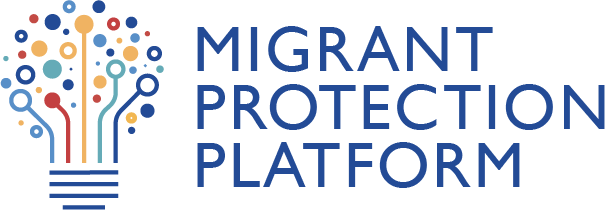IOM gathered stakeholders and IOM country offices for a pivotal regional roundtable event on countering human trafficking and exploitation related to the war in Ukraine.
Migrants in Vulnerable Situations
Displaying 1 - 20 of 571
Case Management is an established practice from medical and social work professions that has been adopted by IOM to provide comprehensive return and reintegration assistance to beneficiaries. This is the first study on case management at IOM. It examines the implementation of case management in the EU-IOM Joint Initiative for Migrant Protection and...
Join IOM at CoP29 side event to understand the nexus between climate change, migration, displacement and risks to human trafficking.
The International Organization for Migration (IOM) commissioned a strategic foresight study, undertaken by UNU-MERIT/Maastricht University .This study aimed to develop plausible future migration scenarios to better understand how the need for AVRR assistance could evolve in West and Central Africa and East and Horn of Africa regions from now until 2030.
This report presents the findings of a comprehensive study on immigration detention and alternatives to detention (ATD) across 19 countries within the five sub-regions of the Asia-Pacific: East and Northeast Asia, Southeast Asia, South and Southwest Asia, North and Central Asia, and the Pacific. Across the Asia-Pacific region, there is widespread use of...
The Asia Pacific region plays a critical role in global migration, serving as a hub for migrants in origin, transit, and destination countries, with many nations in the region experiencing all three phases. Migration within and from the region is often driven by various factors, including responses to vulnerability. As such, regional discussions on mobility...
En Centroamérica, México y la República Dominicana, los perfiles y métodos utilizados en el tráfico ilícito de migrantes han evolucionado, lo que hace cada vez más difícil rastrear y perseguir este delito. Esta dinámica evolutiva también ha dado lugar a la participación en otras actividades ilícitas como el tráfico de drogas, el contrabando de mercancías, la...
Protecting the rights of migrants and affected communities remains central to IOM’s climate action. Explore the nexus between Environmental Migration and Protection.
The impact of climate change is rarely considered as a potential contributor to human trafficking in global discussions or national level policy framework where nexus between the two remain unexplored. Climate change increases the risk of natural disasters and places a strain on livelihoods; it exacerbates poverty and can potentially cause situations of...
Climate change, environmental degradation and disasters are impacting on human life around the world and affecting contemporary migration dynamics. Globally, natural disasters, climate change, and environmental degradation are reshaping contemporary human mobility patterns around the world. Internal mobility and safe, orderly and regular international...
This qualitative study provided a platform for the victims' voices to be heard as they described their actual experiences. h focused on generating an in-depth understanding on child sex trafficking in the tourism sector in Sri Lanka. The research aimed to provide new knowledge on main research questions of (a) What are the experiences of child victims of...
This policy brief has been developed to understand the key features of the new form of trafficking for forced criminality, which has also emerged in Sri Lanka and to make recommendations to combat the crime, effectively protect/assist victims, expeditiously investigate cases and to prosecute the perpetrators. The primary observations made for the purpose of...
The risk of child trafficking exists globally, with no country immune to its impact it makes the protection of the child victims of trafficking a major concern. This Guidance aims to support States in developing and strengthening comprehensive, child-centered collaboration between anti-trafficking efforts and child protection systems. The Guidance has been...
CTDC is launching new Global dataset with harmonized data from counter-trafficking organizations around the world for more easy & reliable data on human trafficking.
Joint Call for Practices by the Migrant Protection Platform and the Network's Hub For this year’s World Day Against Trafficking in Persons (WADiP), under the theme “Leave No Child Behind in the Fight Against Human Trafficking”, the Platform and the Migration Network Hub launched a Joint Call for Practices of programmes and policies relevant to Objective 10...
Joint Call for Practices by the Migrant Protection Platform and the Network's Hub For this year’s World Day Against Trafficking in Persons (WADiP), under the theme “Leave No Child Behind in the Fight Against Human Trafficking”, the Platform and the Migration Network Hub launched a Joint Call for Practices of programmes and policies relevant to Objective 10...
The Eastern and Horn of Africa region is one of the world’s most dynamic areas in terms of migration, driven by a complex interplay of economic, social, and security factors. Migrants and mobile populations in this region face numerous challenges in accessing essential healthcare services, including the absence of migrant-inclusive healthcare laws and...
ICAT released its 2023 Annual Report, summarizing the different activities implemented in the year and results obtained.
The 2023 Annual Report of the Inter-Agency Coordination Group against Trafficking in Persons (ICAT) highlights the significant efforts made in the global fight against human trafficking under the co-chairmanship of the International Organization for Migration (IOM) and the Office of the Special Representative of the Secretary-General on Violence against...
With an emphasis on protecting the rights of women and girls in communities impacted by extractive industries, the project "Enhancing the Response to Gender-Based Violence and Trafficking in Persons in the Solomon Islands" seeks to support ongoing initiatives to address gender-based violence (GBV) and trafficking in persons (TIP) in the Solomon Islands. In...
